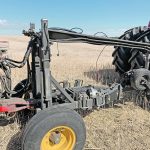Alberta Pulse Growers researcher Nevin Rosaasen analyzed infield testing of commonly available section control systems in pea and canola. As part of his phase one report, he compiled a list of the multiple-zone sectional control technologies used on the Canadian prairies, including aftermarket options for existing equipment. Morris Industries Ltd. Input Control Technology (ICT) to […] Read more
 Crop Management
Crop Management

Sectional seeder selection
Alberta Pulse Growers tested three different section control systems in their quest to quantify financial and environmental benefits of using such systems to reduce overlap in canola and pea fields. APG researcher Nevin Rosaasen said in-field testing compared seeding equipment with five, seven and 10-foot sections, plus section control that manages each individual opener. In […] Read more
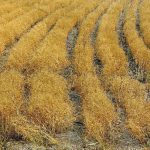
New technology to test desiccants and herbicides
For decades, plant scientists have used a simple method to evaluate desiccants. They sprayed a product on a crop and, days later, looked at the plants to see if it dried the crop. That approach may be coming to an end, as researchers adopt sophisticated sensors and technologies such as hyper-spectral imaging to understand what […] Read more
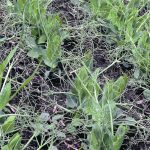
Planter produces uniform pulses
Seeding pulse crops with a planter can improve seedling emergence and plant density under most conditions according to research conducted by Farming Smarter, an applied agronomy research organization out of Lethbridge. There is increasing farmer interest in using planters for multiple crops grown on the Prairies because they are gentle on seed and provide uniform […] Read more

Crop residues shed light on fertilizer efficiency, emissions
Not all pulse crops are created equal when it comes to greenhouse gas emissions and nitrogen fertilizer management, says University of Saskatchewan soil scientist Richard Farrell. “Pulses, in the year you are growing them, you’re not putting on fertilizer or you might give them some starter nitrogen but you’re not going to put on a […] Read more

U.S. hemp reaches $824M
CHICAGO, Ill. (Reuters) — Farmers in the United States produced US$824 million worth of industrial hemp in 2021, the U.S. Department of Agriculture said in a survey-based report last month. Some farmers looked at growing more hemp when commodity crop prices were low during a grain glut and a trade war with China, but prices […] Read more

Russian grain exports boom despite invasion
Russia is shipping wheat like gangbusters despite many reports to the contrary. North American grain analysts indicate Russia’s exports have essentially been shut down by the war in Ukraine. They say shipping lines are no longer servicing Russian ports and insurance costs have climbed so high that it is not economically feasible for the world’s […] Read more
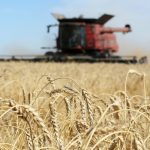
Bull run on wheat has roots in CME change: analyst
Recent rule changes at the Chicago Mercantile Exchange are partially responsible for the frothy wheat market, says an analyst. The CME implemented new rules last year allowing the all-months-combined speculative position limit for wheat to increase to 19,300 contracts from the former 12,000. That effectively increased the influence of speculative investors on the price of […] Read more

Commodities trader Louis Dreyfus enters plant protein market
NEW YORK, March 15 (Reuters) – Commodities trader and food processor Luis Dreyfus Co said on Tuesday it was entering the plant protein business, the latest among large global food groups to invest in a segment expected to keep growing in coming years. Dreyfus – the “D” in the ABCD group of leading international food […] Read more
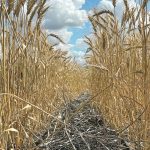
Wheat rises on Black Sea supply squeeze; soy slips on China demand fears
PARIS/MUMBAI, March 15 (Reuters) – U.S. and European wheat futures rose on Tuesday as export curbs by Russia fuelled concerns about global supply disruptions following Moscow’s invasion of Ukraine. Latest crop ratings for U.S. wheat, confirming poor conditions in drought-affected states like Kansas, also supported wheat in the face of losses in other commodity markets. […] Read more

 Crop Management
Crop Management